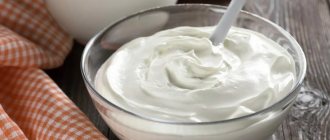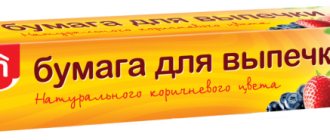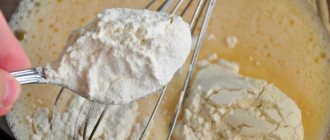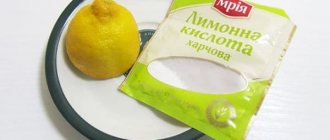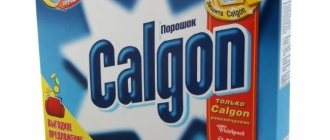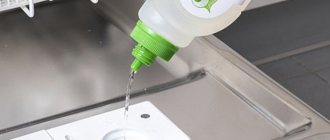Lemon juice is a dietary product containing a huge amount of vitamins and minerals, which can increase performance, restore psychological balance, improve concentration and brain activity.
Using lemon juice in the preparation of marinades, drinks, baked goods, and various sauces is a common practice for cooks, and its use as a cleanser for removing scale or grease is an excellent household way to save time and money.
Often the lack of lemon makes you think about the possibility of replacing this product, but then you should take into account what needs to be prepared:
How to replace lemon juice in baking
An excellent alternative to lemon juice when preparing sweet dishes is citric acid, a crystalline substance packaged in small bags. You can purchase such a concentrate at a grocery store. To prepare juice from acid, a ratio of 1 to 2 is used, where one part of dry powder and two parts of warm water are taken.
How to replace lemon juice in marinade
Lemon juice added to fish or meat dishes reveals the taste of spices and softens the finished product. You can replace it with 6% apple, grape, wine or table vinegar, in a 1:1 ratio (if the recipe requires 1 teaspoon of lemon juice, then add 1 teaspoon of vinegar). When using table vinegar with a higher concentration, it is recommended to dilute it with water according to the instructions.
How to replace lemon juice in salad
Dressing is one of the most important components in preparing salads. To obtain the specific sourness inherent in lemon juice, you can use the same 6% apple cider vinegar with the addition of olive oil.
How to replace lemon juice in drinks
Drinks prepared with the addition of lemon juice are very healthy, as they contain a huge amount of ascorbic acid, minerals and nutrients.
In “vitamin cocktails,” you can replace lemon juice with juices containing large amounts of vitamin C:
- Fruit
: orange, grapefruit, lime, - Berry
: sea buckthorn, cranberry, lingonberry
Despite all the benefits, lemon juice in its pure form has a number of contraindications.
:
- Has a negative effect on tooth enamel
- Not recommended for diseases of the gastrointestinal tract
- It is a highly allergenic product.
Did you know that the Guinness Book of World Records records the time it takes to drink a liter of lemon juice through a straw at 22.75 seconds?
conclusions
Based on the above, we can conclude that the main alternatives to lemon juice will be:
- Lemon acid
- Vinegar (fruit, table, wine)
- Juices with a high concentration of vitamin C
but even if you observe all the necessary proportions of replacing one product with another, try to focus on taste sensations.
Quite often in culinary recipes there is an instruction to “sprinkle the dish (mainly salads) with lemon juice.” Citrus fruits are generously added to baked goods. Sour lemon juice makes it less cloying. Citrons are added to both dough and creams. They use both the zest of the exotic fruit and candied pieces of pulp and skin. But most often the ingredient in dishes is lemon juice. It is added both to soups (for example, solyanka) and to drinks - tea, alcoholic and refreshing cocktails. This article is devoted to one question: is it possible to replace lemon juice with citric acid? And if so, how to introduce white crystals into a dish? What are the proportions? What needs to be done to make the dish taste as if it contained natural lemon juice? You will read about this below.
What is citric acid
What exactly is this white crystalline powder? Undoubtedly, this is a synthetic material. And before we clarify the question of whether lemon juice can be replaced with citric acid, we must establish the connection between these two products. Does synthetic powder have anything in common with citrus fruits? Citric acid was first extracted in history by the Swedish pharmacist Karl Scheele in 1784. How did he get it? He isolated it from the juice of unripe lemons. As you can see, there is a direct connection between these products. The resulting powder is a tribasic carboxylic acid. It dissolves perfectly in water when it reaches at least eighteen degrees. Citric acid also combines well with ethyl alcohol. Therefore, it can be used to make homemade tinctures and vodkas. But the powder is poorly soluble in diethyl ether.
How to zest a lemon using a grater
A regular grater is great for preparing lemon zest. Choose a grater with small holes; the best option would be a grater with the smallest holes - rough holes. How to grate lemon zest? Lightly touching the grater, gently swirl the whole, uncut lemon as you go to extract as much zest as possible, being careful to only cut off the top layer of citrus with the grater. Some of the zest may get stuck in the small holes of the grater, tap it so that most of the zest falls out. In order to clean the grater from zest stuck in the holes, you can take a small brush, which will easily remove the remaining lemon zest from the surface of the grater.
Benefits of zesting a lemon using a grater:
- Using a regular grater, you can quickly and easily remove the lemon zest, which is perfect for baking (the lemon pieces will be practically invisible, while at the same time transmitting their aroma to the dish).
Flaws:
- to effectively and quickly remove the zest from a lemon, you need a grater with sharp edges of the holes,
- You may have problems cleaning a grater with small holes (to make it easier to remove lemon zest from the holes, use a small brush).
A regular grater is the most commonly used device for preparing lemon zest at home. Now we’ll tell you how to zest a lemon without a grater.
Industrial production of citric acid
Any reasonable person will ask: if the powder is extracted from citrus fruits, then why is it so much cheaper than fruit? After all, an eighteenth-century apothecary evaporated natural juice to obtain white crystals. Then they began to add shag biomass to lemon juice. This plant also contains large amounts of this acid. In modern times, industrial production produces powder by biosynthesis from molasses and sugar using strains of the mold Aspergillus niger. Citric acid is used not only in cooking, but also in medicine (including to improve metabolism), cosmetology (as an acidity regulator) and even construction and the oil industry. The global production volume is more than one and a half million tons. And about half of this amount is produced in China. In light of this, the question of whether it is possible to replace lemon juice with citric acid seems even more relevant. Especially if the label says: “Made in China.”
Sauces and fats
Jen Leung/Flickr
Sauces play an important role in cooking. Most of them are sold ready-made. But if you forgot to buy Tabasco or mayonnaise, it doesn’t matter. You can find a way out.
| Ingredient | Proportions | Replacement |
| Worcestershire sauce | 1 tsp. | 1 tsp. ready-made steak sauce; 1 tbsp. l. soy sauce, 4 drops Tabasco sauce, ⅛ tsp. lemon juice plus a pinch of sugar |
| Mustard | 1 tbsp. l. | ½ tsp. dry mustard plus 2 tsp. vinegar |
| Cocktail sauce | 1 glass | Mix 1 glass of ketchup, 3 tbsp. l. horseradish (ready), 1 tbsp. l. lemon juice and 2 tsp. Worcestershire sauce |
| Mayonnaise | 1 glass | 1 cup sour cream or yogurt; beat 1 egg, 160 ml vegetable oil, 1 tsp. mustard, 1 tbsp. l. lemon juice and a pinch of salt and sugar |
| Tabasco | Cayenne or black pepper | |
| Tartarus | ½ cup | 6 tbsp. l. mayonnaise plus 2 tbsp. l. brine |
| Lard | Shortening (confectionery or cooking fat) | |
| Chili (sauce) | 1 glass | A glass of tomato paste, ¼ cup brown sugar, 2 tbsp. l. vinegar, ¼ tsp. cinnamon, a pinch of ground cloves and allspice; a glass of ketchup, ¼ tsp. cinnamon, a pinch of ground cloves and allspice |
| Shortening | Pork fat, butter or margarine | |
| Shortening melted | Vegetable oil |
»
Benefits of citric acid
Synthetic powder is widely used in the food industry and is labeled as E330-E333. But is this flavoring additive completely safe? Is it possible to replace lemon juice with citric acid without harm to the body? The powder is used in the food industry, not only to improve the taste of the product. Citric acid prevents the development of microorganisms, the appearance of mold and unpleasant odors. Therefore, E330 is also used as a preservative. Despite the fact that citric acid is no longer extracted from fruits, it, like citrus fruits, improves vision, strengthens the immune system and has a positive effect on the digestive system. Since it speeds up metabolism, it is used in diets to reduce excess weight. This substance removes toxins, waste, and harmful salts from the body.
How to zest a lemon with a vegetable peeler
A simple vegetable peeler can be a great help in extracting lemon zest. With a vegetable peeler you can:
- cut strips of zest (a very sharp vegetable peeler is needed here, since the lemon peel is quite dense),
- Use a vegetable peeler to cut off thin small pieces of zest using light movements.
Benefits of zesting a lemon with a vegetable peeler:
- With a sharp vegetable peeler, you can cut off the lemon zest with almost no white part of the peel.
Flaws:
- To finely chop the lemon zest, you will have to work with a knife (if you have a lot of zest removed in strips, you can use a blender to chop it).
Harm of citric acid
Not all people can tolerate citrus fruits. These fruits can cause an allergic reaction. Likewise, citric acid is unacceptable to some people. It should be used with caution by patients with gastritis and stomach ulcers. But we wondered: can citric acid replace lemon juice? The time has come to answer it. Yes maybe. But in the case of powder, care must be taken not to make the solution too concentrated. After all, then this can lead to discomfort in the stomach, heartburn, colic and vomiting. Undissolved powder should not be eaten as it causes burns to the mucous membranes.
Subtropical fruits cannot be called cheap. And most recipes only require a couple of drops or a teaspoon of lemon juice. The rest sits in the refrigerator for a long time, dries and withers. Whereas citric acid in a bag can be stored for years. And it costs mere pennies. Therefore, experienced housewives, when asked whether citric acid will replace lemon juice, usually answer: “Yes! And vinegar too! It can also be used to wash metal surfaces contaminated with limescale and rust.”
As for cooking, the range of dishes in which you can use both citrus juice and citric acid is quite wide. If you are kneading dough, you can mix a small amount of synthetic powder with flour. In other cases, the acid crystals must be dissolved in warm water until the concentration of regular lemon juice is reached. The proportions are like this. A small pinch (some recipes recommend on the tip of a knife) per fifty milliliters of warm water. The solution should be cooled.
| What can replace lemon and its juice? | Description |
| Alternative for drinks | Lemon juice contains a large amount of vitamin C, so it is often included in various “vitamin” cocktails. Other citrus fruits are suitable instead, for example:
They are also rich in vitamins, so they will be a good alternative. |
| Fruit juices | In baked goods or in salads, a good replacement would be the same sour juices, which contain a large percentage of vitamin C. This can be the juice of sour apples or grapefruit. The following juice is suitable for homemade mayonnaise or for slaking soda:
Various sugar-free berry concentrates are also suitable. |
| Berries are a good substitute for lemon in a meat marinade. They not only have a vitamin-rich composition, but also allow you to saturate the dish with a pleasant berry taste. Berry juices have a beneficial effect on the condition of the skin, digestive functions, and the immune system. | |
| Vinegar | In solyanka it is permissible to use not only lemon zest and juice, but also vinegar. It is also relevant in baking and other dishes. |
| Lemon acid | This is the most successful option not only for cooking fish, but also for other dishes. It just needs to be dissolved in water and then added to the dish. If you need to soften the sour taste, you can use honey. In some cases, the powder can be added to a dish without diluting with water, for example, in a salad. |
Lemon, and in particular its juice, is widely used in cooking. Quite often it acts as an excellent means for cleaning kettles, microwaves, and washing machines from dirt and scale.
Lemon juice is added to baked goods and used when preparing fish. It makes the taste and aroma of the dish more pronounced and helps make the dough more fluffy.
If during the preparation of a particular dish this product is not on hand, the question arises of what can replace the lemon. There are several alternative products that can be used as a complete replacement.
Bakery
US Department of Agriculture/Flickr
Baking is the pinnacle of culinary excellence. Not everyone is friends with dough and the oven. Many people believe that when preparing sweet and savory pastries, you need to strictly follow the recipe, otherwise nothing will work. This is true. But if you suddenly don’t have baking powder or baking flour in the kitchen, this doesn’t mean that you have to give up homemade buns or pies. Most ingredients in baking recipes are replaceable.
| Ingredient | Proportions | Replacement |
| Agar-agar | 1 g | 8 g gelatin |
| Arrowroot | 1 tsp. | 2 tbsp. l. flour or 1 tbsp. l. corn starch |
| Vanilla (pods) | 1 stick (5 cm) | 1 tsp. vanilla extract |
| Vanillin (powder) | 1 sachet | Vanilla pods, vanilla sugar or a couple drops of vanilla essence |
| Cream of tartar | ½ tsp. | 1½ tsp. lemon juice or table vinegar |
| Ready-made baking mix | 1 glass | Half cup flour, half cup shortening, 2½ tsp. baking powder and ¾ tsp. salt |
| Pressed yeast | ½ pack | 2 tbsp. l. dry yeast |
| Dry yeast | 1 tbsp. l. | 25 g pressed yeast |
| Cocoa powder | 4 tbsp. l. | 30 g unsweetened dark chocolate |
| Ammonium carbonate | 1 tsp. | 1 tsp. baking powder (baking powder) |
| Coconut cream | Cream | |
| Coconut milk | Cow's milk | |
| coconut flakes | 1 tbsp. l. | 1½ tbsp. l. fresh grated coconut |
| Corinka (dark raisins without seeds) | Other types of raisins or chopped dates | |
| Corn starch | 1 tbsp. l. | 2 tbsp. l. wheat flour; 2 tbsp. l. tapioca (cassava sago); 2½ tsp. arrowroot |
| Light corn syrup | 1 glass | A glass of honey or a glass of sugar plus ¼ glass of water |
| Dark corn syrup | 1 glass | Cup maple syrup or ¾ cup light corn syrup plus ¼ cup molasses |
| Carob (carob pods) | 1 tbsp. l. | 1 tbsp. l. cocoa powder |
| Marzipan | 2½ cups | 2 cups floured almonds, 1 cup powdered sugar and 2 tbsp. l. corn syrup |
| Marshmallow | Marshmallow | |
| Molasses (black treacle) | 1 glass | A glass of honey or ¾ cup sugar plus ¼ cup water |
| Honey | 1 glass | A glass of corn syrup; 1¼ cups sugar plus ¼ cup water; half a glass of buttermilk plus 2 tbsp. l. melted shortening |
| Cake flour | 1 glass | Partial glass of premium wheat flour (you can add 2 tablespoons of corn starch) |
| Confectionery flour | Bread flour of the highest or first grade | |
| Self-rising flour (ready-made mixture of flour, salt and baking powder) | 1 glass | A glass of premium wheat flour, 1½ tsp. baking powder and ½ tsp. salt |
| Potato flour | 1 tbsp. l. | 2 tbsp. l. premium wheat flour or 1 tbsp. l. corn starch |
| Corn flour | Premium wheat flour | |
| Maize flour (masa harina) | Corn flour | |
| Rye flour | Premium wheat flour | |
| Rice flour | 1 glass | Partial glass of premium wheat flour |
| High gluten flour | Premium wheat flour | |
| Whole grain flour | 1 glass | Partial glass of premium wheat flour |
| Baking powder (baking powder) | 1 tsp. | ¼ tsp. soda plus ½ tsp. vinegar or lemon juice; ¼ tsp. soda plus ½ tsp. cream of tartar; ¼ tsp. soda plus ½ tsp. sour milk, buttermilk or yogurt |
| Sugar (sand) | 1 glass | A glass of brown sugar; 2 cups powdered sugar; ¾ cup honey or 1⅘ cup confectioner's sugar |
| Burnt sugar (caramel cooler) | 1 glass | A glass of regular sugar plus 2 tbsp. l. dark corn syrup |
| Brown cane sugar | 1 glass | 1 cup regular sugar (maybe add a little dark corn syrup) |
| Lump sugar (refined sugar) | 1 cube | 1 tsp. granulated sugar |
| Powdered sugar | 1 glass | ¾ cup granulated sugar or a cup granulated sugar plus 1 tsp. corn starch - grind everything in a coffee grinder |
| Unsweetened chocolate | 30 g | 3 tbsp. l. cocoa powder plus 1 tbsp. l. butter, confectionery fat or margarine |
| Semi-sweet chocolate | 30 g | 30 g unsweetened chocolate plus 3 tbsp. l. Sahara; 3 tbsp. l. carob plus 2 tbsp. l. water |
»
Fruit juices
In baking and in marinade, you can use not only lemon juice, but also berry and fruit juices. They also contain ascorbic acid and can be used to make sauces.
You can choose juice as a replacement:
- apples;
- other citruses;
- sea buckthorn;
- cranberries;
- lingonberries;
- currants.
In addition to juices, berry concentrates are a good solution; it is important that they do not contain sugar. You can add lemon zest or other citrus fruits to the dough for desserts.
Berries are probably the best alternative to lemon. They, of course, are not able to replicate the taste of lemon, but they will add the necessary sourness to the dish and saturate it with vitamins.
Eating berries has a beneficial effect on:
- skin condition;
- functioning of the digestive organs;
- immune system;
- health in general.
The berries would be appropriate in salads and jelly. This is a good addition to marinade or sauce for meat and fish. To prepare fish, it is better to use grape and pomegranate juices. Any berries can be added to jam, saturating it with vitamins, pleasant taste and aroma.
Ways to make lemon zest at home
We list the main tools that can be used to prepare lemon zest:
- regular grater
- knife,
- vegetable peeler,
- special equipment: zesters, zest graters.
The method you choose to prepare lemon zest may depend on what shape and size you want the lemon zest to be. So, large pieces of zest are suitable for drinks (such pieces are easier to get out after use). How to zest lemon for baking? Use tools that allow you to get finely chopped zest. To decorate various dishes and drinks, you may need a long spiral strip of zest, then choose the appropriate lemon peeler.
You can read about how to store lemon zest here.
Lemon zest of various shapes can be used to prepare:
- pies (for example, grape pie),
- cupcakes,
- cookies,
- drinks,
- jam,
- mousses, puddings,
- salads (vegetable and fruit),
- meat, fish, vegetable main courses,
- marinade (for example, for preparing chicken kebabs),
- sauces,
- soups
Let's look at each way to prepare lemon zest in more detail.
Lemon acid
There is no better alternative than citric acid. It allows you to completely replicate the taste of lemon. If you have zest, you can also include it in the dish so that not only the taste, but also the aroma is appropriate.
Citric acid can be diluted:
- water;
- apple cider vinegar;
- honey.
Sometimes you don’t even need to dilute it with anything; use pure powder, which will add the desired sourness and fluffiness to the dish.
There are many options for replacing lemon. They all help in preparing all kinds of dishes. Each analogue has its own specific taste and aroma, but most importantly, they have characteristics almost identical to lemon. Study each of the presented analogues and choose the most suitable one for yourself.
Lime juice is the best substitute for lemon juice as it can be used as a one-to-one substitute and has a very similar taste and acidity level.
In fact, when canning food, it is an ideal substitute for lemon juice because it has a similar pH level. Other substitutes, such as vinegar, are less acidic and may cause the product to last for a shorter period of time.
In desserts where lemon juice is a key ingredient, lime juice adds a slightly different flavor. However, you will still end up with a tart and citrusy flavor.
Seasonings and spices
Michael Stern/Flickr
Spices and herbs add flavor accents to dishes. But there are so many seasonings that it’s easy to get confused. The following table will help you better understand them, and, if necessary, find a replacement for one or another spice.
| Ingredient | Proportions | Replacement |
| Anise | 1 tsp. | 1 tsp. dill seeds or a few drops of anise extract |
| Anise (extract) | 1 tsp. | 1½ tsp. anise seeds |
| Basil | 1 tsp. | 1 tsp. oregano (oregano) or cumin |
| Carnation | Allspice, cinnamon or nutmeg | |
| Pumpkin Pie Spice Mix | 1 tsp. | ½ tsp. cinnamon, ⅛ tsp. ground nutmeg, ⅛ tsp. dried nutmeg husk, ⅛ tsp. ground ginger, ⅛ tsp. ground cloves; also see Apple Pie Spice Mix |
| Apple Pie Spice Mix | 1 tsp. | ½ tsp. cinnamon, ¼ tsp. ground ginger, ⅛ tsp. ground allspice, ⅛ ground nutmeg; You can use cardamom instead of ginger |
| Ground ginger | 1 tbsp. l. | ⅛ tsp. ginger powder; allspice, cinnamon, ground nutmeg or dried nutmeg husk |
| Ginger (fresh grated root) | ½ tsp. | ¼ tsp. ground ginger |
| Italian seasoning mix | 2 tbsp. l. | 1 tsp. basil, oregano, marjoram, rosemary, sage and thyme |
| Cayenne pepper | ⅛ tsp. | 4 drops Tabasco sauce |
| Cardamom | 1 tsp. | 1 tsp. ground ginger or 1 tsp. cinnamon |
| Curry | 1 tbsp. l. | ½ tsp each ground cardamom, cayenne pepper, ground coriander seeds, cumin, ground ginger and turmeric |
| Chervil | 1 tsp. | 1 tsp. chopped dried parsley plus ⅛ tsp. chopped dried sage; 1 tsp. fresh parsley |
| Coriander | Parsley | |
| Cinnamon | 1 tsp. | ¼ tsp. nutmeg or allspice |
| Cinnamon sugar | 250 g | 200 g granulated sugar plus 50 g cinnamon |
| Sesame (seeds) | 1 tbsp. l. | 1 tbsp. l. chopped blanched almonds |
| Turmeric | 1 tsp. | 1 tsp. dry mustard |
| Kitchen herbs | 1 tsp. | ¼ tsp. dried thyme, oregano, sage and rosemary |
| Bay leaf | 1 whole sheet | ¼ tsp. chopped bay leaf |
| Onion powder | 1 tsp. | 1 tbsp. l. chopped onions |
| Marjoram | Basil, thyme or savory | |
| Ground celery seeds with salt | 1 tsp. | ¾ tsp. salt plus ¼ tsp. ground celery seeds |
| Nutmeg | Dried nutmeg husk, cinnamon or ginger | |
| Mint | Basil, marjoram or rosemary | |
| Oregano | Thyme, basil or marjoram | |
| Paprika flakes | 1 tsp. | 1 tsp. cayenne pepper |
| Fresh chopped parsley | 1 tbsp. l. | 1 tsp. dried chopped parsley |
| Dried parsley | 1 tsp. | 1 tsp. cilantro or chervil |
| Allspice | 1 tsp. | ½ tsp. cinnamon plus ½ tsp. carnations; ½ tsp. cinnamon, ¼ tsp. cloves and ¼ tsp. ground nutmeg |
| Ground red pepper (paprika) | Spicy ketchup or black pepper | |
| Chili peppers, dried and crushed | 1 tsp. | 1 tsp. ground red pepper |
| Seasoning for poultry | 1 tsp. | ¾ tsp. sage plus ¼ tsp. thyme |
| Rosemary | Thyme, tarragon (tarragon) or savory | |
| Celery seeds (for pickles and marinades) | 1 tbsp. l. | 1 tbsp. l. dill seeds |
| Five spice mixture | 5 tsp. | 1 tsp. anise, cinnamon, ground dill, ground cloves and ground black pepper |
| Table salt | 1 tbsp. l. | 1½ tsp. kosher (that is, coarse) salt |
| Salt mixture with spices | 4 tsp. | 2 tsp. table salt, ½ tsp. sage, ½ tsp. dried parsley, ½ tsp. onion powder, ¼ tsp. marjoram and ¼ tsp. paprika |
| Dried nutmeg husk | Nutmeg, allspice, cinnamon or ginger | |
| Thyme | Basil, marjoram, oregano or savory | |
| Caraway | Chili powder | |
| Fresh herbs | 1 tsp. | ½ tsp. dried herbs |
| Dried crushed herbs | 1 tsp. | ¼ tsp. powdered dried herbs |
| Fresh chopped dill | 3 tsp. | 1 tsp. dried dill |
| Dill (seeds) | 1 tsp. | 1 tsp. cumin |
| Wuxiangmian (Chinese five-spice mixture) | 1 tsp. | ¼ tsp. anise seeds, cinnamon, ground cloves and ground ginger |
| Cymbopogon (lemongrass) | Melissa | |
| Savory | Thyme, marjoram or sage | |
| Fresh garlic | 1 clove | ⅛ tsp. garlic powder; ¾ tsp. chopped garlic; ½ tsp. garlic salt; ½ tsp. garlic juice; 1 tsp. garlic paste |
| Garlic powder | ⅛ tsp. | ½ tsp. garlic juice or garlic salt; 1 tsp. garlic paste |
| Garlic salt | ½ tsp. | Chopped fresh garlic clove; ½ tsp. garlic juice; ⅛ tsp. garlic powder |
| Chili powder | 1 tbsp. l. | 2 tsp. cumin, 1 tsp. cayenne pepper, 1 tsp. oregano and ½ tsp. garlic powder |
| Tarragon (tarragon) | Chervil, dill seeds or anise seeds |
«
Lemon acid
Citric acid is a naturally occurring acid found in lemon juice, making powdered citric acid an excellent substitute for lemon juice, especially in baking.
One teaspoon (5 grams) of citric acid is equal in acidity to about 1/2 cup (120 ml) of lemon juice. This way, only a very small amount is required and you will need to make changes to the recipe.
To maintain the correct ratio of dry to wet ingredients, you may also need to add additional liquid to the recipe.
Plus, using citric acid in baking can even prevent certain vitamins and antioxidants from being destroyed during cooking.
What is orange zest
The zest is the thin, colored part of the peel. It lacks bitterness, which is more characteristic of the white membrane. A bright addition to almost any recipe. The main highlight is the aroma. Even a small amount can give a bright, fantastic aroma that artificial flavors will never provide.
The intense aroma is due to the essential oils contained in the crust, the main compounds being limonene and myrcene.
Limonene has powerful antioxidant properties. Protects against the oxidative effects of free radicals. Studies show that it can limit tumor growth.
Myrcene is found in many fruits known for their flavor. Has an antimicrobial effect. Similar to limonene, fights inflammation.
The bright orange color of the fruit is given by beta-carotene, which is converted into vitamin A in the body. The zest contains most of it.
Orange peel contains many of the same nutrients found in the peel, but without the same amount of hesperidin, which is more abundant in the white membrane.
Potassium hydrogen tartrate (tartar)
Potassium hydrogen tartrate is an acidic powder sold in the baking section of most grocery stores.
Although it has many culinary uses, it is commonly used to stabilize the foam of egg whites or whipped cream. It is also included in baking powder.
Because it is sour, it can be used as a decent substitute for lemon juice in baking. Some websites suggest using 1/2 teaspoon potassium hydrogen tartarate for every 1 teaspoon lemon juice as directed in the recipe.
Keep in mind that you may need to add additional liquid to account for the lack of liquid in the cream of tartar.
How to cook meringue in the oven
This is a classic recipe, thanks to which the meringue turns out airy and beautiful.
Photo: 5seconds/Depositphotos
Ingredients
- 3 egg whites;
- 180 g powdered sugar.
What else can you add to meringue?
The taste and appearance of classic meringue will help you diversify:
- vanillin;
- cinnamon;
- food extracts or flavors (vanilla, almond, mint, fruit, etc.);
- food coloring (gel coloring will make the meringue more shiny, and powder coloring will make it matte);
- chopped nuts;
- cocoa;
- coconut flakes.
They are added to the protein mass at the end of cooking.
But be careful. Oils (such as in nuts) and liquids can interfere with foam formation. Therefore, it is better to add just a little bit than to overdo it and ruin the meringue.
If you want to add food flavorings, never use ones that contain alcohol. It will also prevent the squirrels from rising.
Preparation
Separate the whites from the yolks. Beat the egg whites with a mixer at low speed for about 30 seconds. When the whites just begin to foam, increase the speed to medium and beat until thick white foam forms.
Footage: @The Happy Foodie / YouTube
Then gradually add powdered sugar. Turn off the mixer and stir the meringue base with a spoon, collecting any protein from the sides that has splashed during the beating process.
Footage: @The Happy Foodie / YouTube
After this, beat for a few more minutes at high speed. You should get a thick foam of uniform consistency. You can, oddly enough, check the readiness of the meringue base by lifting the container with it upside down: the protein mass should remain in place.
Footage: @The Happy Foodie / YouTube
Place the finished base in a cooking bag. You can get by with an ordinary spoon, but the dessert will not be as beautiful.
Preheat oven to 100°C. Line a baking sheet with parchment paper and form the meringue onto it.
Footage: @Kitchen Stories (US) / YouTube
Place the baking sheet in the oven on the middle rack for 1-1.5 hours. Cooking time depends on the size of the meringue: the smaller they are, the faster they will be ready. For meringues that are too large, it will take about 2 hours.
Do not open the oven during cooking. Due to temperature changes, the meringue may crack. The finished meringue should easily separate from the parchment.
Footage: @In The Kitchen With Matt / YouTube
After cooking, turn off the oven, open the door slightly and leave the meringue inside until completely cooled for several hours.
Learn to cook classics

